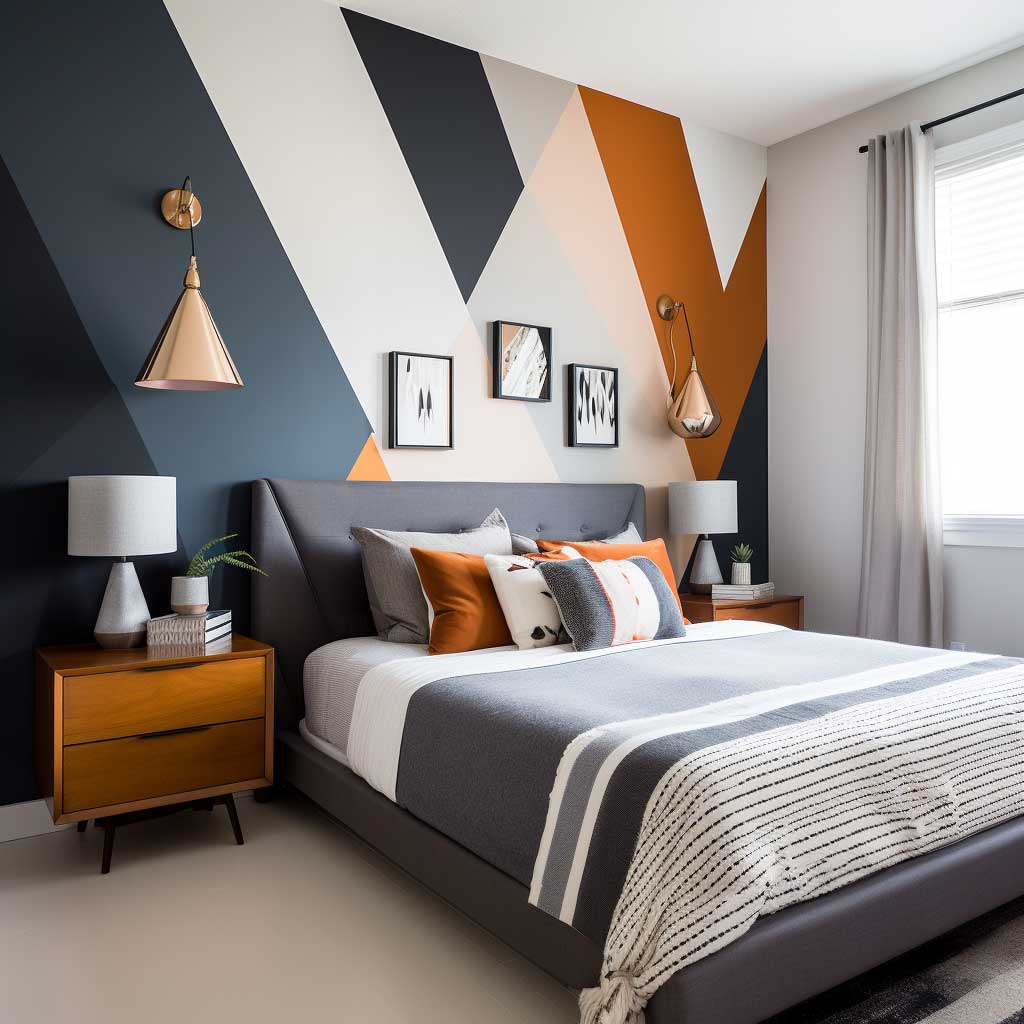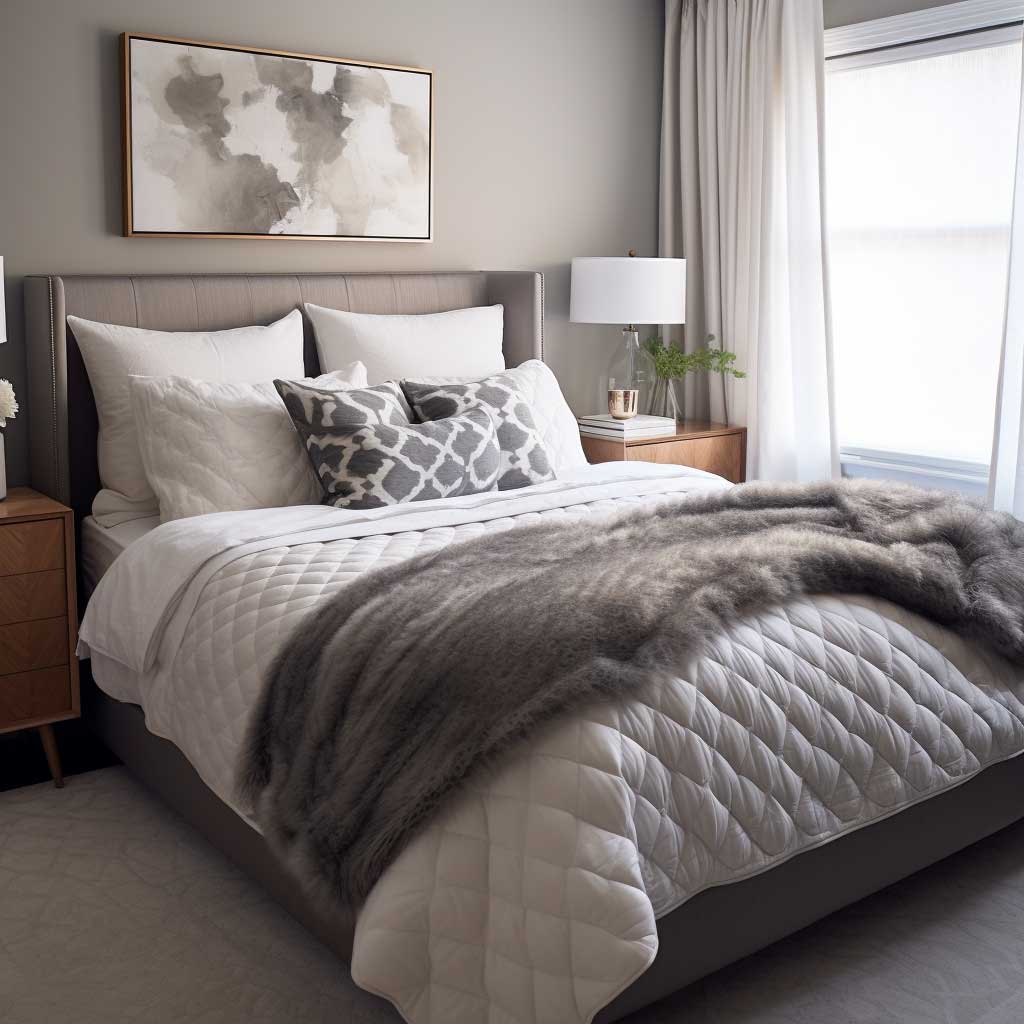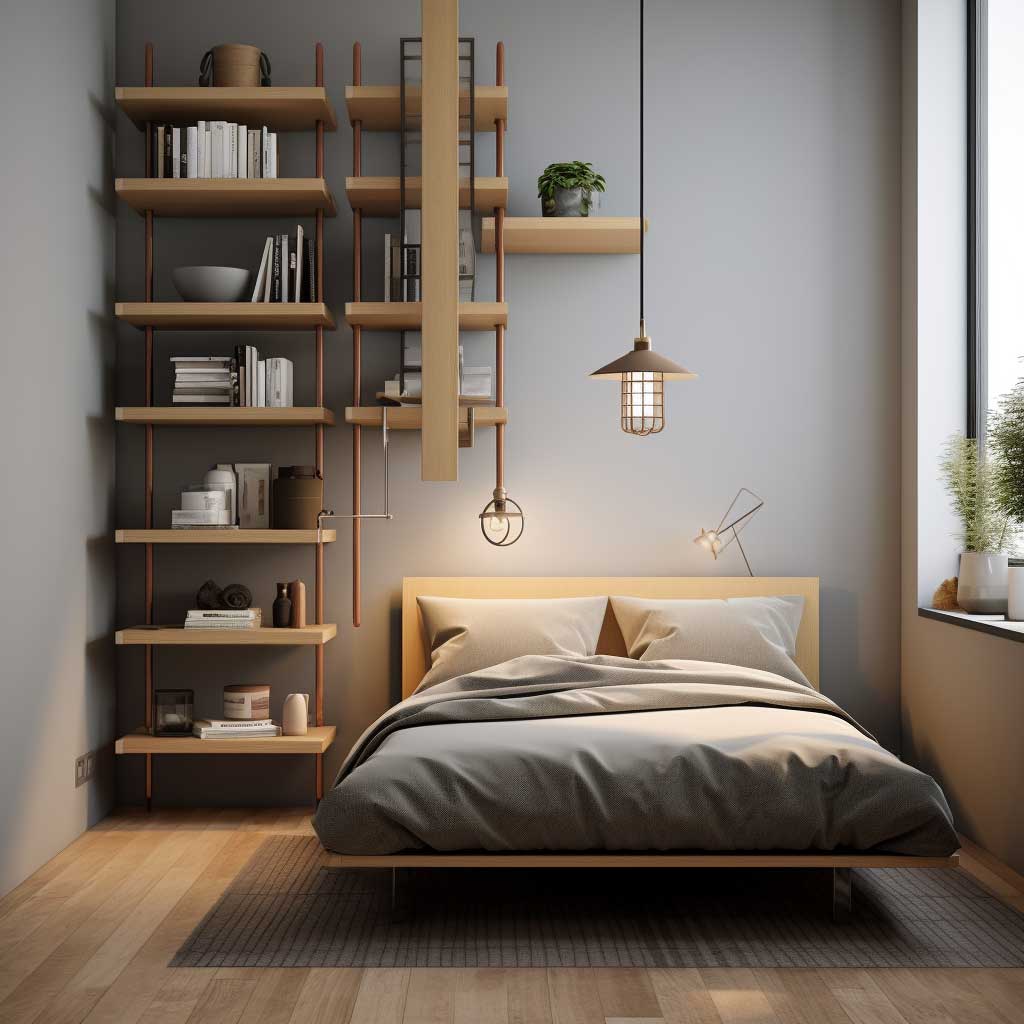The art of small bedroom interior design is not just about optimizing space but also about creating an ambiance that resonates with warmth and character. Two powerful tools in a designer’s arsenal to achieve this are color and texture. When used thoughtfully, they can transform a compact bedroom from a mere functional space into a vibrant, cozy haven.
Bold Hues in Small Bedroom Interior Design




The realm of small bedroom interior design often revolves around creating an illusion of space. While neutral tones and minimalistic decor are commonly recommended, there’s an untapped potential in using bold hues. Contrary to popular belief, vibrant colors, when used judiciously, can make a small bedroom feel alive, personalized, and expansive.
Colors have the power to evoke emotions, influence perceptions, and define spaces. In a small bedroom, the choice of color becomes even more significant. While light colors are known to make spaces feel larger, bold hues can add depth, character, and a sense of luxury.
Starting with the walls, one might consider a deep shade of blue or green. These colors, often associated with nature, can bring a sense of calm and serenity. They can act as a backdrop, against which lighter furniture and decor can pop, creating a dynamic contrast.
Accent walls are another way to introduce bold colors without overwhelming the space. A single wall painted in a vibrant shade, like mustard yellow or ruby red, can become the room’s focal point. Paired with neutral furnishings, this wall can make a statement without making the room feel cramped.
Color coordination is crucial in a small bedroom. Choosing a monochromatic palette, where different shades of the same color are used, can create a cohesive look. For instance, a room with walls painted in teal can have navy bedding and turquoise accents. This layered approach adds depth and dimension.
Accessories and decor offer another avenue to introduce bold hues. Vibrant cushions, colorful rugs, or even brightly colored furniture pieces can enliven the space. These elements can be easily changed, allowing for flexibility and periodic room refreshes.
Bold hues, often overlooked in small bedroom interior design, offer a world of possibilities. They bring personality, depth, and a touch of luxury to compact spaces. By embracing vibrant colors and balancing them with neutrals, homeowners can craft bedrooms that are both stylish and spacious in feel.
Layered Textures Elevate Small Bedroom Comfort




In the intricate tapestry of small bedroom interior design, texture plays a pivotal role. While colors set the mood, textures add depth, warmth, and comfort. Layering different textures can transform a simple bedroom into a tactile haven, appealing to the senses and elevating the overall ambiance.
Texture in interior design refers to the surface quality of materials. In a bedroom, this can range from the softness of a rug to the roughness of a wooden headboard. Layering these textures creates a multi-dimensional space that feels rich and inviting.
Starting with bedding, a mix of materials can enhance comfort. Cotton sheets, a velvet duvet, and a chunky knit throw can offer varied tactile experiences. Pillows, too, can vary in texture, from silky to woven, adding to the layered effect.
Flooring is another area where texture plays a significant role. While hardwood floors offer a smooth, cool surface, adding a shaggy rug or a woven carpet can introduce warmth and softness. This not only feels good underfoot but also adds a visual layer to the room.
Walls, often overlooked in terms of texture, offer ample opportunities. Beyond paint, consider textured wallpapers, wooden panels, or even fabric wall hangings. These elements can add depth and character to the room.
Furniture, too, contributes to the room’s texture. A leather chair, a metal side table, or a wooden bed frame can introduce varied textures, making the room feel dynamic and well-rounded.
Texture is the unsung hero of small bedroom interior design. It brings a depth of experience that color alone cannot achieve. By layering different textures, homeowners can create a space that appeals to multiple senses. The tactile richness not only enhances the room’s aesthetics but also its comfort, making it a place one would love to retreat to after a long day.
Accent Walls in Small Bedroom Design Masterpieces




When it comes to small bedroom interior design, every square inch counts. While the limited space poses challenges, it also offers opportunities for creativity. One such opportunity is the creation of accent walls. These statement-making walls can transform the entire ambiance of a room, adding depth, character, and a touch of personal style.
Accent walls break the monotony of a room. In a small bedroom, where space is at a premium, an accent wall can become the room’s focal point, drawing attention and making the room feel more spacious and dynamic.
The choice of color for an accent wall is crucial. While bold hues can make a striking statement, softer shades can create a more subtle, calming effect. For instance, a deep emerald green can evoke feelings of luxury and opulence, while a soft lavender can bring a sense of tranquility.
Beyond paint, there are numerous materials and techniques to create accent walls. Wallpaper, with its myriad of patterns and textures, can introduce a unique design element. From geometric patterns to floral designs, the choices are endless and can be tailored to fit the room’s overall aesthetic.
Textured materials like wood, stone, or brick can also be used for accent walls. A wooden panel wall can bring warmth and rustic charm, while a brick wall can add an industrial, loft-like feel. These materials not only add visual interest but also introduce tactile elements to the room.
Another innovative approach is the use of fabric or tapestries. These can be hung on the wall, adding softness and a touch of bohemian flair. They can be easily changed, allowing for periodic room refreshes.
Lighting can further enhance accent walls. Wall-mounted lights or LED strips can highlight the wall’s features, adding depth and drama.
Accent walls are a testament to the transformative power of design. In the context of small bedroom interior design, they offer a solution to elevate the space, making it feel larger, more defined, and deeply personal. By choosing the right materials, colors, and lighting, homeowners can craft a bedroom that is both functional and aesthetically captivating.
Textured Bedding Choices for Small Bedroom Luxury




Bedding plays a central role in any bedroom’s design, but in small bedroom interior design, it takes on even greater significance. The bed often dominates the space, and its dressing can set the tone for the entire room. Textured bedding, with its tactile richness, can elevate the comfort and luxury of a small bedroom, making it feel like a plush sanctuary.
The beauty of textured bedding lies in its ability to offer varied tactile experiences. From the cool smoothness of silk to the rough texture of linen, every material brings its unique touch.
Starting with the basics, sheets are the foundation of any bedding. While cotton is a popular choice, materials like satin or bamboo can introduce a different feel. These materials not only feel luxurious against the skin but also have a subtle sheen, adding a visual layer to the bed.
Duvets and comforters can be chosen in materials like velvet or chenille. These fabrics, with their plush texture, add a sense of opulence. They also provide warmth, making the bed feel cozy and inviting.
Throws and blankets offer another avenue to introduce texture. A chunky knit throw or a faux fur blanket can be draped over the bed, adding a layer of tactile richness. These elements not only enhance the bed’s comfort but also its visual appeal, making it the room’s centerpiece.
Pillows, too, play a crucial role in introducing texture. Mixing and matching different materials, from woven to quilted, can create a layered look. Decorative pillows with embellishments like tassels, sequins, or embroidery can add a touch of glamour and sophistication.
Bed skirts or valances, often overlooked, can further contribute to the room’s texture. Materials like ruffled linen or pleated satin can introduce an additional design element, making the bed appear more grounded and luxurious.
Beyond the tactile experience, textured bedding also plays a role in sound absorption. In a small bedroom, where every sound can be amplified, materials like wool or velvet can dampen noise, adding to the room’s tranquility.
Textured bedding choices are a game-changer in small bedroom interior design. They transform the bed from a mere functional piece to a luxurious retreat. By layering different textures, homeowners can create a bed that appeals to multiple senses, offering comfort, warmth, and a touch of opulence. In the world of interior design, it’s these subtle touches that elevate a space, making it truly special.
Color and texture are more than just decorative elements; they are the essence of design that breathes life into a space. In the realm of small bedroom interior design, they play a pivotal role in setting the mood, creating depth, and enhancing comfort. By embracing a palette of colors and introducing varied textures, even the most compact bedrooms can exude charm, warmth, and personality.






